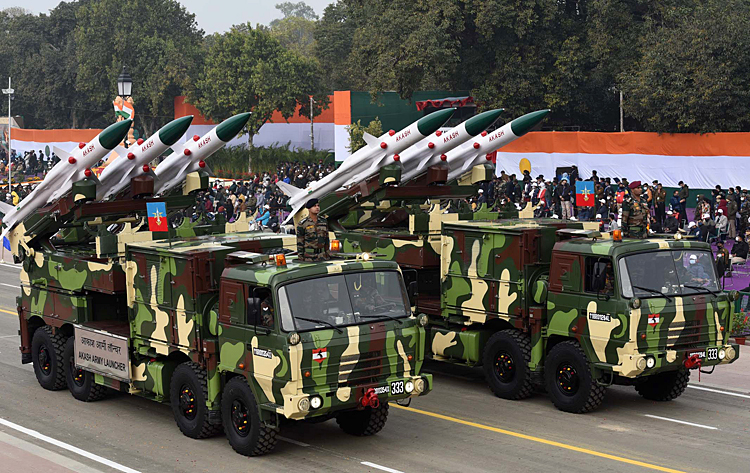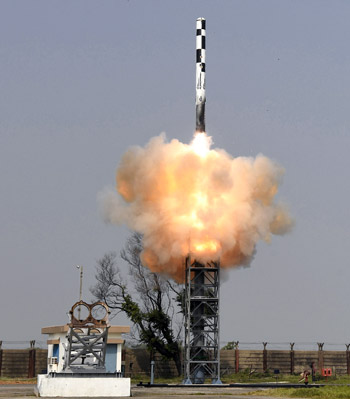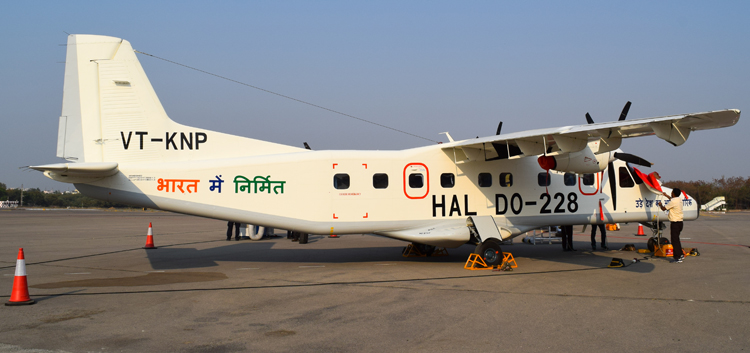INDIAN ARMED FORCES CHIEFS ON OUR RELENTLESS AND FOCUSED PUBLISHING EFFORTS

The insightful articles, inspiring narrations and analytical perspectives presented by the Editorial Team, establish an alluring connect with the reader. My compliments and best wishes to SP Guide Publications.

"Over the past 60 years, the growth of SP Guide Publications has mirrored the rising stature of Indian Navy. Its well-researched and informative magazines on Defence and Aerospace sector have served to shape an educated opinion of our military personnel, policy makers and the public alike. I wish SP's Publication team continued success, fair winds and following seas in all future endeavour!"

Since, its inception in 1964, SP Guide Publications has consistently demonstrated commitment to high-quality journalism in the aerospace and defence sectors, earning a well-deserved reputation as Asia's largest media house in this domain. I wish SP Guide Publications continued success in its pursuit of excellence.
Soaring Defence Exports
India's growing defence exports, ambitions and industrial reforms, highlight the achievements in indigenous production shaping India's global defence footprint
 |
The Author is Former Director General of Information Systems and A Special Forces Veteran, Indian Army |

Defence Minister Rajnath Singh said in April 2025 that India aims to increase its defence exports to ₹50,000 crore (approximately $6 billion) by the FY 2029-2030, a significant increase from the ₹23,622 crore achieved in FY 2024–25. The defence export goal is tied to a larger objective of increasing total defence production to ₹3 lakh crore by 2029–30. This ambitious target is supported by simplified policies, increased private sector involvement, and a strong focus on domestic manufacturing, with the goal of making India a self-reliant defence producer and a prominent player in the global defence market.
The ambitious Defence Export target is supported by simplified policies, increased private sector involvement, and a strong focus on domestic manufacturing, with the goal of making India a self-reliant defence producer and a prominent player in the global defence market.

India has undertaken substantial reforms to progress defence exports. The defence acquisitions process is reformed to encourage a robust defence industrial ecosystem, focusing on indigenisation. The updated 2020 Defence Acquisition Procedure (DAP) restricts certain weapons imports and promotes indigenous weapons and indigenous content. To support defence startups and invest in domestic research and development (R&D), the MoD has allocated over $56 million over five years under the Innovations for Defence Excellence (iDEX) programme. Similarly, through initiatives like 'Emergency Procurement', lengthy procurement processes are bypass, involving smaller, private defence companies to address urgent military requirements, developing the military industrial base and contributing to defence export potential.
India has pursued specific policies with the aim of converting its growing defence industrial ecosystem into an international export powerhouse. In 2020, the Indian government institutionalised the Defence Production and Export Promotion Policy (DPEPP) to set targets and programmes to manage India's defence exports. Defence Public Sector Undertakings (DPSUs) like Hindustan Aeronautics Limited (HAL) are participating in promotional events like DefExpo, Aero India, Wings India, and others to attract foreign buyers.

Private companies are also playing a significant role, contributing over ₹15,000 crore to recent exports. India now exports a wide variety of defence products to over 100 countries, including the USA, France, and Armenia. India's defence exports to the US exceeded $2.8 billion between 2019 and 2024, representing a small proportion of US arms imports but 50 per cent of India's total defence exports in the same period. Some of the exported items include: BrahMos missiles; Advanced Towed Artillery Gun Systems (ATAGS); Light Combat Helicopters (LCH) and Chetak helicopters; Dornier-228 aircraft; bulletproof jackets and armoured protection vehicles; radars and naval vessels.
India now exports a wide variety of defence products to over 100 countries, including the USA, France, and Armenia.
India's exports to the European Union have surged, surpassing $135 million from February 2022 through July 2024. India's major private defence companies like Reliance, Tata, Bharat Forge, and Mahindra are working alongside European players like Dassault, Airbus, and Rheinmetall to establish manufacturing operations in India. India's defence export relationship with Armenia has emerged as one of the first significant buyers of indigenously-developed finished products. In the past three years, Armenia has acquired the Pinaka multi-barrel rocket launch system, the Akash missile defence system, and an Indian anti-drone system.
At the same time, defence exports failed to achieve the government target of $5 billion by FY 2024-25; lagging behind even mid-size countries like South Korea ($9.5 billion) and Turkey ($7.1 billion) in terms of exports. The Chief of Air Staff publicly expressed apprehensions about deliveries of the HAL-produced Tejas Mk1A aircraft. Until 2024-25, state-owned Hindustan Shipyard Limited was operating at a loss, which made it ineligible to participate in export tenders.

On September 23, 2025, Defence Minister Rajnath Singh and Morocco's Defence Minister Abdelatif Loudyi jointly inaugurated Tata Advanced Systems Limited's (TASL) WhAP 8x8 vehicles defence manufacturing facility in Berrechid, Morocco; first such plant by an Indian private company in Africa. WhAP is a modular combat platform equipped with advanced mobility, protection and mission adaptability. Configurations of WhAP include infantry fighting vehicle, armoured personnel carrier, reconnaissance, command post, mortar carrier and ambulance variants. It is amphibious and its options for manned or unmanned remote weapon stations and anti-tank guided missile capability enhance its versatility.

Under the contract with the Government of Morocco, TASL will deliver WhAP 8x8 vehicles to the Royal Moroccan Army; first deliveries to begin next month. Ironically, India is yet to exploit the full potential of WhAP and its multiple configurations because of the pressure for joint production of the vintage American Stryker ICV (covered in these columns earlier), which has finally been rejected.
David Gross (2004 Physics Nobel laureate) said, "You can't just 'Make in India' by using science done elsewhere. First discover, then invent, THEN make." India's R&D spending is 0.6 per cent of GDP; four times less than China: five times less than the US; 10 times less than Israel
Atmanirbharta in defence is the ultimate solution but we must be careful that 'Make in India' doesn't mean just assembling in India (which is happening in many cases), the indigenous content is sufficient as listed (to be increased progressively), and the transfer of technology (ToT) is not just lip service – but total.The IAF has floated a tender for procuring 60 Medium transport aircraft (MTA). The C-390 Millenium is a strong contender especially potential for collaboration with a mid-air refuelling variant – KC-390. However, reports indicate the 'Make in India' C-390 is costing nearly double the cost of C-295M - why?

China moved to the top of the United Nations' annual ranking of most innovative countries in September 2025, replacing Germany, as firms in Beijing invest heavily in research and development (R&D).Others in the top 10 are Germany, the US, South Korea, Singapore, Britain, Finland, the Netherlands and Denmark. India ranks 38 globally?
Finally, at the Quantum India Summit 2025, David Gross (2004 Physics Nobel laureate), who helped establish ICTS Bengaluru, said, "You can't just 'Make in India' by using science done elsewhere. First discover, then invent, THEN make." India's R&D spending is: 0.6 per cent of GDP; four times less than China: five times less than the US; 10 times less than Israel. Duncan Haldane, also a Nobel laureate, said, "It can't just be the government. Industry has to step up too." The question is no longer whether India can become a science superpower. It's whether we're even serious about trying. Are we okay being the world's largest consumer of foreign research? Or do we want to be the creator? Are the powers that be listening?





